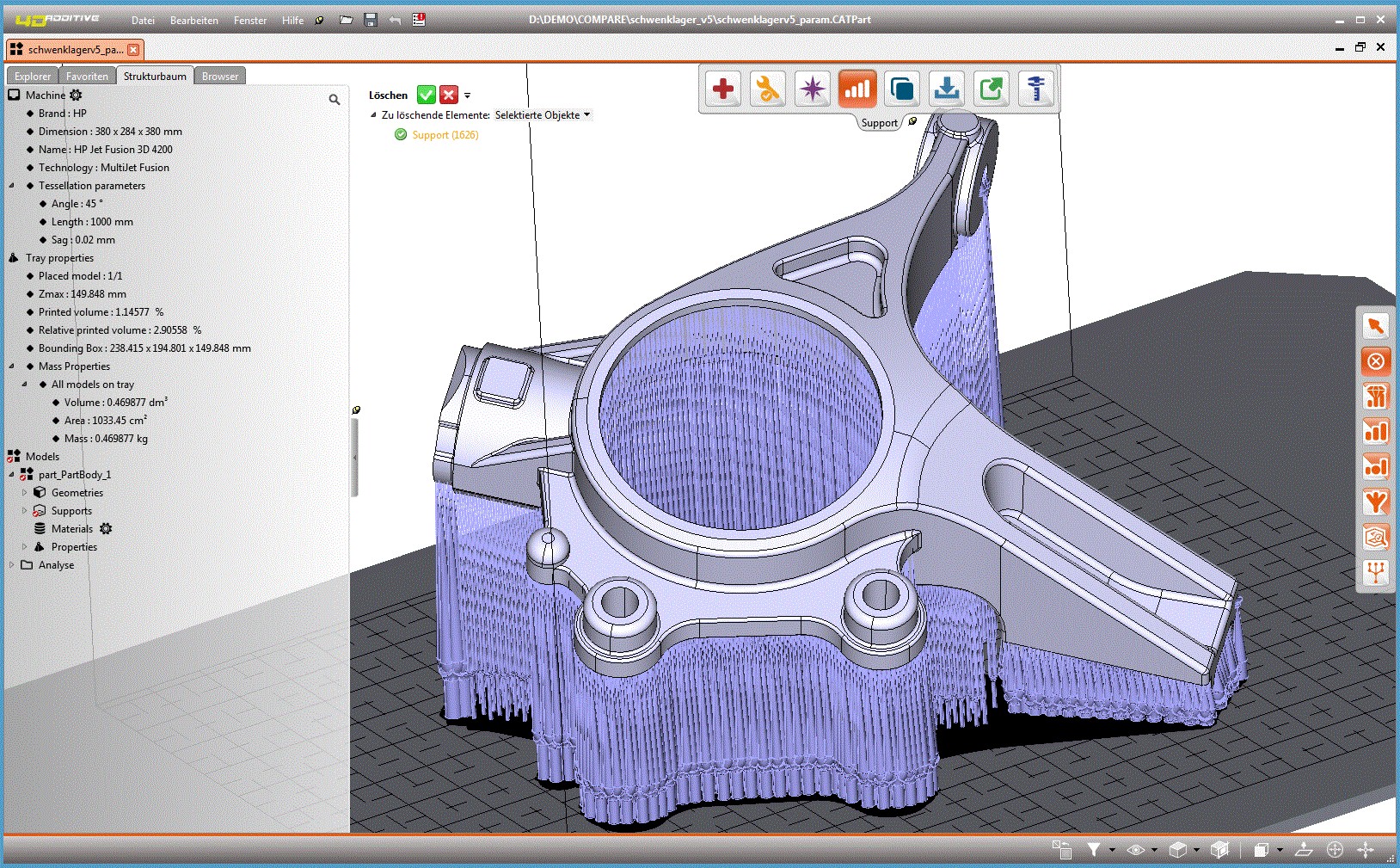 The new version of the 3D printing tool 4D_Additive makes it possible to process exact B-REP CAD data of all common native and standard formats for the preparation of 3D printing data. With the new interface for writing out STEP data, the software manufacturer CoreTechnologie presents another market innovation.
The new version of the 3D printing tool 4D_Additive makes it possible to process exact B-REP CAD data of all common native and standard formats for the preparation of 3D printing data. With the new interface for writing out STEP data, the software manufacturer CoreTechnologie presents another market innovation.
The new version of the 4D_Additive software from CoreTechnologie makes it possible to use exact B-REP CAD data of all common native and standard formats for the preparation of 3D printing data and for the first time allows repaired and optimized STEP models to be written out from 3D printing software . This makes the innovative 4D_Additive software a novelty in the industry. With the new version 1.4, users can save the repaired CAD data as exact STEP geometry. It is also possible to save the support structures automatically generated in the software as exact STEP models and then to process them further in the CAD system or to use them for the FEM analysis.
Exact models
By using exact models that are read in as STEP as well as other common native formats such as CATIA, NX, CREO and Solidworks, the innovative tool enables highly accurate analysis and repair of the models. Up to now, triangulated STL models have mainly been used for 3D printing, which only represent an approximation of the real CAD geometry. With the B-Rep core of the new software, the models are precisely repaired and specifically adapted for 3D printing using modeling functions. In this way, offset surfaces are quickly created in the software for later milling over fits or changes in diameter for Ensat bushings.
Greater accuracy and less storage space
An advantage of the exact geometries compared to STL models is, in addition to the higher accuracy, a lower storage requirement for the data. This saves large building platforms with hundreds of parts in one compact file size. The additive manufacturing software 4D_Additive enables a 3D printing process with testing, repair and preparation of models in accordance with the CAD engineering standards that have long been established for other common production processes.
In addition to an innovative texture module for surface refinement and automatic component labeling, the software has repair and modeling functions. The automated component alignment and intelligent nesting functions with multiprocessor calculation enable reliable and fast filling as well as the optimal use of the installation space for all common machine types. Special analysis functions ensure collision safety, optimal heat distribution and production-ready component design and complete the software in terms of a continuous additive manufacturing process.
www.coretechnologie.de





























































































